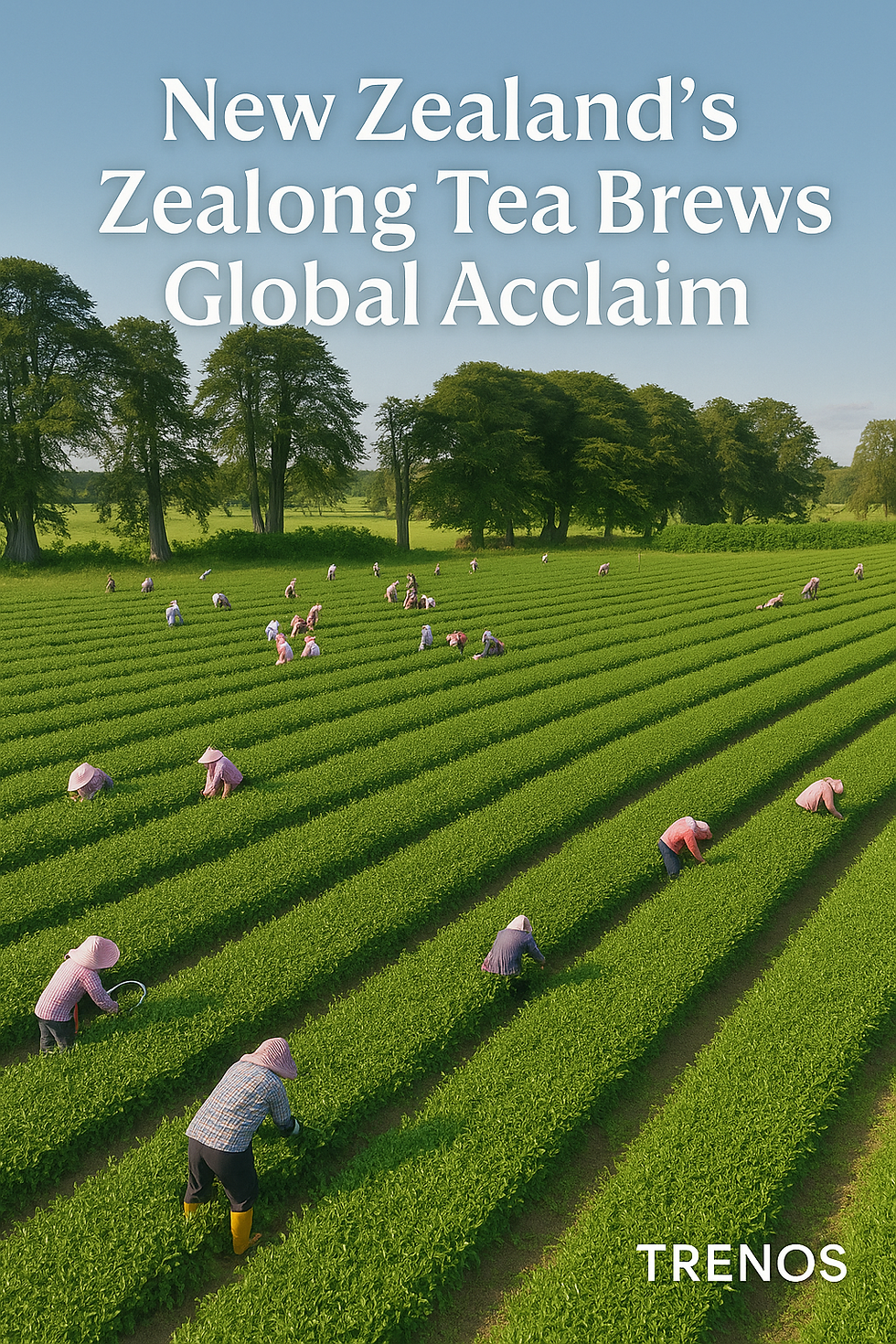

New Zealand's Zealong Tea Brews Global Acclaim
New Zealand’s only commercial tea plantation based in the Waikato, Zealong Tea Estate, has steeped itself into global recognition, literally, after being listed among the world’s best tea houses in “150 Tea Houses You Need to Visit Before You Die” by Lannoo Publishing.
12 hours ago1 min read


Barry Callebaut Plays Double Game – Cocoa and Cocoa-Free
Chocolate giant Barry Callebaut is hedging its bets, keeping cocoa close while diving headfirst into the cocoa-free future. The Swiss heavyweight has entered a long-term partnership with Planet A Foods, the German start-up behind ChoViva, a chocolate alternative made from local crops like sunflower seeds. The deal neatly straddles both camps: traditional cocoa dominance and the growing demand for sustainable, non-cocoa chocolate.
15 hours ago1 min read


Winners of the Bezos Centre Sustainable Protein Challenge @ NUS Singapore
Three startups have been crowned winners of the inaugural Bezos Centre for Sustainable Protein @ NUS × Enterprise Singapore “Sustainable Protein Startup Competition” at the Asia‑Pacific Agri‑Food Innovation Summit 2025 in Singapore. Each of the winners, cultivated meat startup, Magic Valley from Melbourne , Fermeate a photomolecular fermentation startup based in California and Terra Bioindustries from Toronto, Canada and involved in up-cycling agro-industrial by-products, wil
17 hours ago1 min read


Singapore Shifts to Hybrid Food Model — Local Meets Import for Future Resilience
Singapore has formally shifted to a hybrid food resilience model, blending local production with trusted imports as it pushes back its “30 by 30” target to 2035. The new plan sets 20 percent local supply for fibre (leafy greens, mushrooms, beansprouts) and 30 percent for protein (seafood, eggs), down from the once-ambitious goal to produce 30 percent of all nutritional needs by 2030. The revision reflects hard realities: limited agricultural land, high energy and labour costs
2 days ago1 min read


GABA-Rice Functionalisation for Mental Wellness
Japanese food-tech outfit Sankyo Foods is launching a microwavable “GABA-Rice” range under its retail arm Food Base, tapping into the rising wave of mental-wellness functional foods. Each serving contains around 100 mg of the neurotransmitter-precursor GABA via germinated brown rice blends enriched with traditional Japanese grains and beans, comfortingly familiar rice with added wellness appeal.
3 days ago1 min read


Record Fruit Exports Lift New Zealand’s Horticultural Fortune
New Zealand’s fruit exports hit $5.68 billion in 2025, a record 42 percent increase on the previous year. Kiwifruit remained the standout performer, driving the total value of fresh and processed horticultural exports to $6.85 billion.
3 days ago1 min read


Indoor Coffee Farming Goes High-Tech
The idea of growing coffee indoors isn’t just a lab-curiosity anymore, it’s going commercial. Meet Big Guns Coffee, a U.S. veteran-and-daughter venture using hydroponics to grow coffee in a warehouse-style setup, controlling light, temperature, humidity and CO₂ to mimic the tropical highlands.
4 days ago1 min read


Australia’s Food Security Reframed - Biomanufacturing as Defence Strategy
In a world of weather shocks and geopolitical tension, Cellular Agriculture Australia has thrown down the gauntlet — food isn’t just sustenance, it’s national security. Their new white paper “Made & Grown: The Future of Food Biotechnology & Biomanufacturing in Australia” argues that investing in biomanufacturing is no longer optional; it’s a sovereign imperative.
4 days ago1 min read














Comments